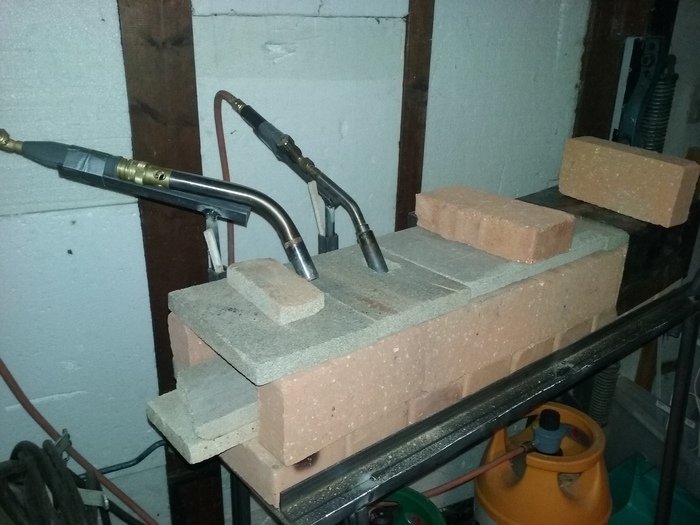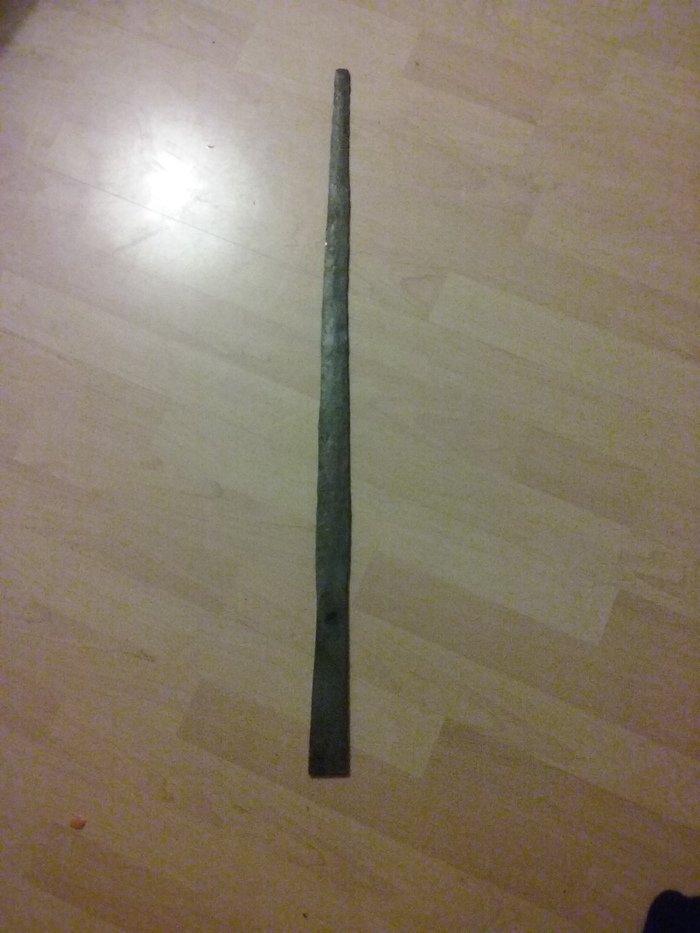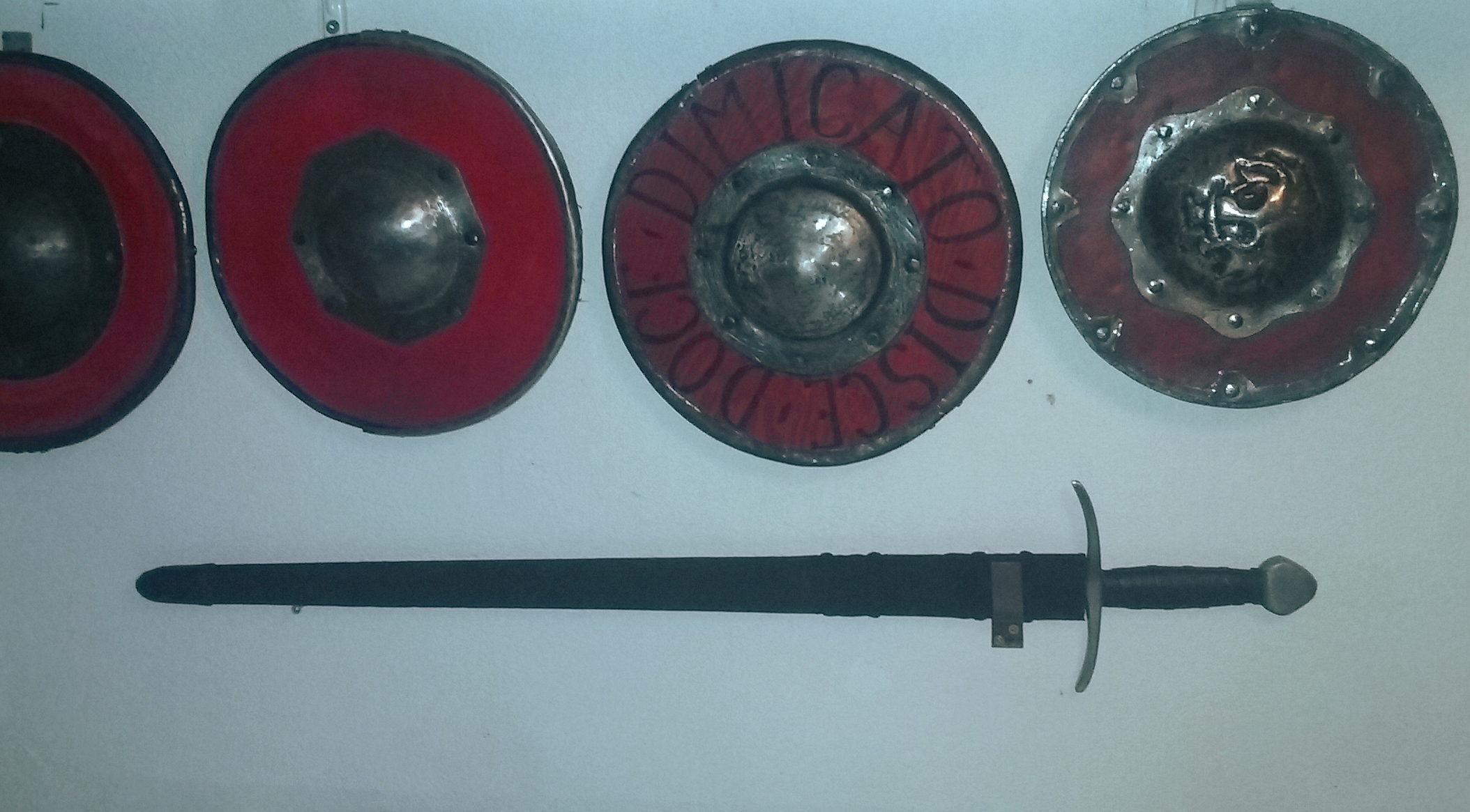Join me now, if you will, on a journey to the land of steel and fire, On a quest for the marriage of shape and function, on a travel through the realms of learning, disappointment, anger and ultimately, success.

A sword is just a sharp piece of steel! True and oh so very false. Many myth persist around swords that make them out to be either semi-magical artifacts or just big knives.
Neither is correct even if I tend to agree more with the second notion. Not that I dont think swords are fantastic, but so are knives.
A lot of people have opinions about swords but very few have actually held one and even fewer have tried to swing one. I decided, when finally, I got in a position where it was feasible , or even possible for me to consider making my own sword, that I should know about how they where used before making one.
At that time I had researched making swords for quite a few years. I was a journeyman goldsmith and a selftaught blacksmith, but I was not a swordsman.
Thus, step one was to learn how to use a sword. luckily there was a club in Copenhagen (close to where I worked at the time) Which taught Historical European Martial Arts (HEMA), so I signed up and started training sword and buckler, according to the I:33 system
What this taught me, (apart from perhaps the coolest and geekiest martial art possible) was something about how a sword behaves both at rest and when swung.
I also started following people who made and researched swords on youtube and facebook(yes I am still on facebook) Of particular mention here is Peter Johnson Who have written much about the design and dynamic properties of the sword (He is not a Hemaist himself but has worked with some of the excellent swedish fighters).
While getting (slowly) better at fighting and understanding the dynamics of blades, I also experimented with bladesmithing while at the same time building my smithy. I decided that this first blade should be a blunt training blade since I didnt really need a sharp blade, but missed a training sword at least once a week.

I bought a massive used anvil, and build a forge from fireproof stones and 3 large gasburners (of a type used for casting precious metals), and yes there are only two in this image I know. I rarely use all three.

I managed to get my hands on the hammers and thongs from an old smithy in Svenstrup on Funen, and I was ready to begin forging swords ... Or thats what I thought.

It went really well in the beginning. I was able to forge the steel and got something that began to look like a sword

When I was close enough in shape I went ahead and did the heat-treat, or hardening. And thats where it when bad. Heat treating consist of two parts (at least the version I do) first the metal is heated to around 850 degrees celsius and then quenched in water(or some other medium depending on the steel) In this process it is not uncommon for the metal to warp and thus you risk ending up with an s shaped blade.
This is not the end of the world as it can be bent back when doing the second part, which is heating it up again to around 150-200 degrees and letting it cool slowly in air.
Unfortunately it is not a risk free operation. The blade may snap and break while you try to remove the kinks and that is exactly what happened to me the first time I did it ...

and the second time ....
and the third.
At this point I was getting really angry but I kept on tweaking my process in the hope that it would get better and each time I got closer and closer to my goal.
Finally on my 4rth attempt I managed to make an entire blade which didnt break and which was straight.
In the meantime I had elaborated on the smithy and added a vertical forge, where the blade would get a more even heat

It is made from modular chimney tubes lined with a refractory felt.
This meant that the blade warped less, and with the experience I had gotten from my numerous failed attempt I managed to make a blade that was straight and well tempered.
Then on to making the fittings. A crossguard (and a pommel)

And putting it all together:

I called this blade Pertinacia which is latin for persistence. I think it was a fitting name for this first success because it was indeed born from my tenacity and stubborness .
It found a nice place on my wall together with my collection of homemade bucklers (which you can read more about here )

Its been used a number of times for training but I ended up giving it to my younger brother as a christmas gift, since I could "just make myself another one"

Im EvilHippie, a compulsive creative and jack o' trades. if you want to know more about me check out my introduction post here
If you like what you see, feel free to upvote, follow and resteem
